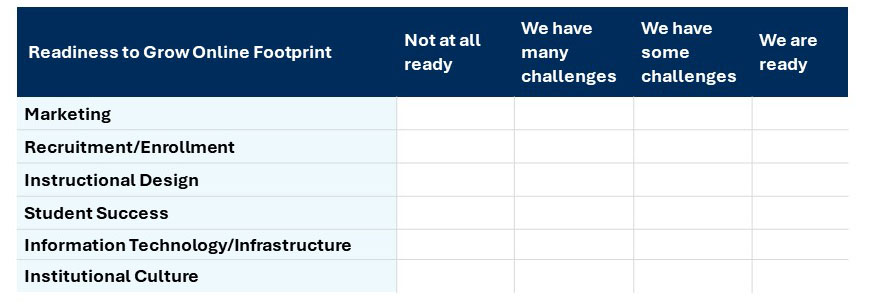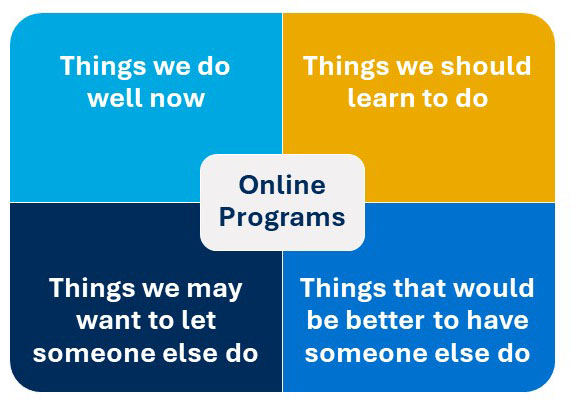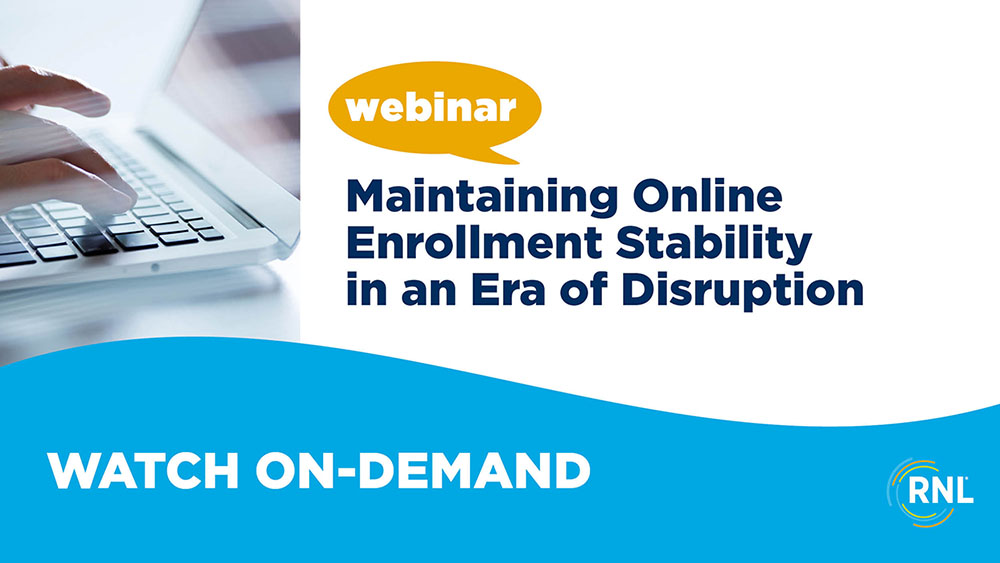graduate & online enrollment
Achieving Success Without an OPM
Over the years, I have consulted with dozens of institutions that, in understanding the market dynamics of our time, began the process of expanding their online offerings. The key challenge for many schools has been not just a lack of bandwidth, but also not having the in-house expertise needed to create, manage, market for, recruit, and enroll students in online programs. Some decided to invest in their internal capabilities, but many more chose to offload all or some of this work to an online program management provider (OPM).
Market forces disrupting OPMs
As online education has moved from a “peripheral” to a “central” aspect of enrollment health (and financial well-being) a great deal has changed that is creating a lot of market disruption to the OPM industry:
- Dissatisfaction with the OPM revenue share business model (typically requiring institutions to surrender 50+ percent of enrollment revenue to the OPM).
- Regulatory changes that will likely disallow the revenue share model—and other elements critical to an OPM’s bottom line—by the end of 2024.
- Frustration with OPM opacity that is typical of most of these arrangements. Institutions working with an OPM are operating in a black box with little to no transparency into how the OPM is doing what it is doing for the institution in what was supposed to be a partnership.
- The rising feelings of both a form of entrapment in their OPM contracts combined with the sense of risk tied to owning little to nothing related to those online programs (i.e. leads, marketing materials/creative, online web presence for the online programs, revenue, etc.) should the OPM succumb to the Ed Tech market forces currently at play.
As a result, more and more schools have separated, or are considering separating, from their OPM and others who are just getting into the online space have been watching from the sidelines and are now trying to weigh the pros and cons of going with an OPM or some other type of partner.
Watch RNL’s latest webinar on Maintaining Online Enrollment Stability in an Era of Disruption in which we talk through both the market forces that are affecting OPM viability and how to evaluate your readiness to go in a different direction.
Evaluating your options
The decision to either stay clear of OPM vendors, or separate from a current OPM contract, is not an easy one. The many temptations that have attracted schools to OPMs (or keep them tied to their OPM) could be the subject of an entire blog. Today’s focus is on the critical internal evaluation institutions must consider when either a) considering for the first time what type of partner with which to work, or 2) those considering “divorcing” their current OPM. This evaluation needs to ensure a complete understanding of the capabilities, bandwidth, resources (financial and otherwise), and skill sets needed to successfully operate your online programs. Most schools, in my experience, have no idea what it takes, but need to. Through my years of meetings focused on helping schools “go on their own,” I developed a set of “key questions which has grown to a self-assessment tool to help universities evaluate where they have the resources and capabilities to successfully operate their online programs and where they fall short. Only after working through these extensive questions can institutions start to think about their best options for filling gaps where they exist.
High level assessment of readiness
Institutions first need to take a high-level view to assess their overall capabilities (and readiness for success) in the overarching areas of marketing, recruitment/ enrollment, instructional design, student success, IT/infrastructure, and institutional culture. This initial step provides the first step in determining where there is current “readiness” and where the greatest areas for either internal development or an external partnership exist. The following table shows an example of how schools should approach this reflective process:
Readiness deep dive

Obviously, this is just the start of what should be a deliberate and all-inclusive exercise across each of these (and other) areas and among disparate stakeholders on campus. For each of the six big “buckets” (and others determined in the initial readiness conversations), a deep dive evaluation of things critical to success should be completed. By answering questions focused on the institution’s level of “readiness,” a sense of current capacities, areas of likely internal growth and those areas in which the institution should seek a temporary or permanent partner start to become clear.
Although the question sets in each of the “buckets” that have morphed into our self-assessment discussion guide are extensive, we recently developed a “starter set” of the most critical questions for consideration. Below, we present these questions and a quick summary of how to use them in your evaluation:
Marketing

A school’s ability to better understand resources available for the inevitably high costs of ad spend and other marketing initiatives, along with the development of high-quality lead generation campaigns, is key. Matching up those resources with a sense of what the OPM was spending when contracted with the school will provide greater insight and understanding. Lastly, institutions need to understand the skill set and capacity required to market these programs. In many cases, the human resources needed for marketing and recruitment of these programs are diluted because they have multiple responsibilities across campus. The institutions may also lack the channels and platforms required for a the most modern and effective marketing and recruitment efforts.
Recruitment and enrollment


A school’s ability to effectively engage and nurture prospective students—in a timely/expeditious manner—is imperative for success. Each university needs to honestly assess and determine whether current resources and staffing patterns are adequate enough to meet the needs and expectations of today’s online students (70 percent of whom expect a personalized response within 24 hours of their inquiry). This exercise continues for each overarching area. This process provides a foundational assessment of strengths and limitations that allows institutions to drop each of the functions critical to online enrollment success into one of the categories shown in the “Online Programs” diagram here. Beyond the things that the institution is doing well and/or those they could easily learn to do well, a critical element in this final stage is thinking through those things that the institution does not currently do well that they should take on and those things that they would be better served to outsource to a true partner.
Only through such an exercise can a university fully understand how to manage the expansion of online programming without using an OPM. Schools will quickly identify where they can take on additional and new aspects of online program management and where they will best use institutional resources by identifying a strategic partner. If your institution is trying to figure out how to manage online expansion without defaulting to an OPM, please let us know. Ask for a complimentary consultation with an RNL Enrollment Consultant who can walk you through how to manage a self-assessment and provide our best insights on the questions you need to use to evaluate your readiness.
Talk with our graduate and online enrollment experts
Ask for a free consultation with us. We’ll help you assess your market and develop the optimal strategies for your prospective graduate students and online learners.

